There is a great deal of intrigue surrounding the life of Sir Sydney Nolan. Together with Patrick White, he was able to open up the International art market to raw and real Australian bush myth. Much of the intrigue and devastating tragedy of the stories he told reflected some of the traumas of his life. His daughter was fond of saying, "Like the good old Irish riddle which asks, "What is Irish Dementia like? The answer is "The only thing they remember are their grudges!"
Nolan's work was raw and honest in its complexity. It is that honesty which captures the heart of the Australian people. Fiercely loyal, possessive and jealous - his work stands out against the shallowness of the present Australian condition.

What Made Sir Sydney Nolan So Popular?
by Jo_Murphy
Nolan's Australian landscapes captured the untidiness of the outback and arid desert wilderness. He superimposed 'portraits' of rogues, bushrangers and castaway personalities.
Myths, Reality and the Australian Psyche
Ned Kelly, Burk and Wills, and Mrs Fraser
Australia grew up as a convict nation. Larikanism has always bubbled beneath a cool Australian exterior, which always seems to mask up as identifying with the aggressor, when in fact each and every Australian suppresses a touch on rebellion and cheekiness.
Three of the stories that Nolan chose to explore through painting were the Legend of Ned Kelly, (twice) the story of the escape of Mrs Frazer and the tragic nature of the Burkes and Wills Expedition.
Each one of these stories unveils the harshness of early Australian settlement. When European Australians settled Australia, they found it necessary to either subdue or eradicate the First People who lived here. To this day, the politics of this situation reverberates through the very fabric of Australian society. Like all countries that have been built by dispossessing their first people, slums have been created by removing people to reservations. Like all other countries caught in the aftermath of this unfortunate way of dealing with invasion, there was a process of disremembering. There was also a process of mythic glorification that acted to manufacture a kind of social amnesia. Somehow amongst this fabric of self-protection and aura of Australia 'marking the spot' of the great "Fair Go" arose.
Nolan's work is cryptic. It unmasks layers of self deception and presents Australia in "The Raw".
Ned Kelly the Trial
Two series of paintings were based on the same theme
Sydney Nolan painted two whole series based on the theme of Ned Kelley, his capture and the trial.
Ned Kelly was eventually executed for his exploits. He ranged as a bush outlaw rustling horses. (among other things). It is intriguing that to the Australian psyche, the outlaw is still seen as a hero of sorts. What could justify making a person who terrorised the countryside into a hero? The mythic situation had a raw and odd aura surrounding it. It was perceived at the time, and on into history, that he had been forced to rebel against an unjust system.
Like Robin Hood, Ned Kelly (was said to have) robbed from the rich, who he perceived as having the law stacked on their side. He was said to have treated the poor in a fair and gentle manner. But like all clashes with the law, the situation escalated, and he was eventually captured. A shoot out took place at Glenrowan in 1880. It is the creative tension emanating from the story that Nolan used to create his iconic series.
Rather than just concentrate on the struggle of life, Nolan was trying to create episodes of Australian nationalism. For better or worse, Nolan painted Ned Kelly as hero, a metaphor for humankind. In truth it doesn't really matter what he intended because the paintings act as a rhetorical question and not as an answer. By the very act of painting the iconography, Nolan has begged the question - "Who was Ned Kelly?" within the confusingly complex fabric of Australian settlement.
Against a very harshly painted background, Nolan painted Kelly as a dogged fighter, and also as a victim, and consequentially as a hero. He parodied war and used Kelly as a way to exemplify resistance to tyranny. He put forward a liberational attitude to freedom. The illustration of Kelly folding his arms at his trial does not portray a penitent sinner!
Nolan became an Internationally acclaimed artist because his narratives were integrated into the outback landscape, thus affording people from overseas a glimpse of Australia that uniquely presented the raw countryside. This was no stylistic imitation of the way Europeans painted.
He was able to give the audience an insight into the 'mythical' history of Australia and at the same time reveal the beauty of the Australian bush.
His landscapes captured the inevitable way that the harshness of settlement of Australia influenced the customs, aspirations and behaviour of Australians. His landscapes were a balance of the synthesis between harmony of legend, symbol and the visual impact of the colourful Australian landscape.
Although Kelly is in the central motif, reiterating through many, many paintings, the stark figure of Kelly in his tin can hat operates almost as a reversal of chiaroscuro. The stark black tin can shape draws the viewer to the painting and acts to highlight the colours around the icon.
 | Sidney Nolan Sidney Nolan's paintings have helped shape a popular image of Australia and its characters. Author, critic and broadcaster Tom Rosenthal knew Sidney Nolan better than most. A pe... |
 | Sydney Nolan |
Leadership Foibles
An exploration of what makes Australia - Australia
When Nolan painted the Burke and Wills expedition it was less about intrigue and more about utter futility. He was able to capture what it might be like to be lost in the Australian Wilderness. "In 1860–61, Robert O'Hara Burke and William John Wills led an expedition of 19 men with the intention of crossing Australia from Melbourne in the south to the Gulf of Carpentaria in the north, a distance of around 3,250 kilometres (approximately 2,000 miles)". (Wikipedia)
This is a story of failing leadership and a large dose of bad luck. With both of their leaders, five other travellers lost their lives. One sole survivor, John King, crossed the continent and made it back alive to Melbourne. All of the myths that Nolan explored have a haunting theme of poor leadership, and an aberrant recklessness that cost lives.
And yet, if the Australian wilderness had not been explored, Australia as we know it, would not exist today.
Many artists and authors have drawn attention to the plight of travellers in the bush. It only takes a small mistake of navigation even now, and a lone traveler can become hopelessly lost.
Presenting the World in a Different Way
Distortions of Memory
Misadventures - The Shipwreck that Wrecked Eliza Fraser
A woman taken captive and enslaved on an Island
Whilst the story of Eliza Fraser doesn't sound like it could possibly be true, it is, at least in part, a real story of hardship, misfortune, abuse and betrayal.
It is another great Australian myth explored by Nolan. It is said that Nolan used the story in a cathartic manner. This does seem to be true, and he obliquely supported this theory before he died. There seems to be no real reason why we should be prying into the brilliant artist's private life. He suffered great personal hardship throughout his life. One of these traumas involved the suicide of his second wife. What we can make of this prying personal material, is that he was human and that the people in his life were also prone to foibles and blunders. Some of the women in his life have been posthumously charged with manipulation, possessiveness and betrayal. Perhaps they were like this? Perhaps Nolan was as self absorbed as any other great painter? It is rare for great artists to mange totally fulfilling relationships, because they must plough so much of their energy into their painting. Painting is not only about research, it is also about expressively creating with soul, and this is an isolated and lonely experience. The Art World expects so much from creatives, whilst at the same time judging, shaming and blaming them when they attempt to deliver.
All we really need to know about this artists personal life is that he reflected his own emotional battles in his paintings. He reframed context and worked with psychological material intuitively. Through this process of catharsis, he captured the dangers, deceptions, betrayals and harshness of the Australian landscape as a backdrop for the same phenomena in real life. He was ale to eventually synthesise two parallel dynamics so that his canvas screamed with energy and dynamic tension.
Many great artists experience very distressing lives
Edith Piaf was no exception
Expressing the Beauty of Life
Capturing resolution as abstraction
Like many other great artists, Sidney Nolan turned to abstraction in later life. Through this mode of expression, he was able to capture 'resolution'. He travelled the world capturing the landscape and through a very long prolific process was able to synthesise all that he saw so that his canvases emanated peace and tranquility. Somehow in this process, he did not lose energy but enthused energy, vigour and vitality into these beautiful images.
Australians have a lot to be grateful to Nolan for. Sidney Nolan introduced Australian painting, and through it the Australian landscape to the International arena. More importantly, he introduced Australians to a debate about the construction of their own identity. In this Post Colonial Post- Post Modern world, understanding the Australian psyche and talking with them about their recollection (re-remembering) of their past become essential. Through this understanding, we can come to terms with the injustices we still see all around us today. Maybe through this understanding, we will be able to comes to grips with the way other 'immigrants' who come to our shores in boats are treated? Our behaviour and attitude has to change with the times. Maybe the recent revival of interest in Nolan's work has come about for this very reason.
The Pointillist Movement Was About a Certain Kind of Energy
By the time he died Nolan was as resolved and integrated as was the best of the International crowd.
You might also like
Suzanne Valadon - "The Blue Chamber"Suzanne Valadon was a Fench circus performer, artist's model, waitress and si...
Understanding The Persistence of Memory by Salvador DaliDali's work was prophetic. Scientists still struggle to explain the concept...
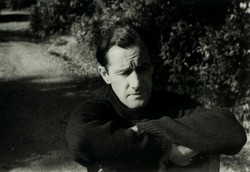

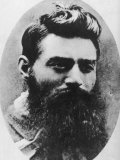
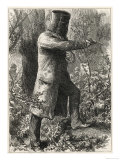
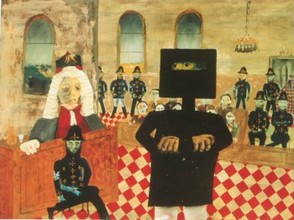


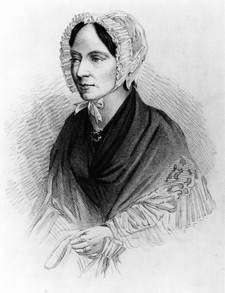


 As We Age - We React to Life's Challenges Differentlyon 03/16/2024
As We Age - We React to Life's Challenges Differentlyon 03/16/2024
 Organic Gardening - Cunnamulla Styleon 03/08/2024
Organic Gardening - Cunnamulla Styleon 03/08/2024
 Cunnamulla - Premium Destination Outbackon 12/17/2023
Cunnamulla - Premium Destination Outbackon 12/17/2023
 OpenAI and Watermarkson 02/06/2024
OpenAI and Watermarkson 02/06/2024

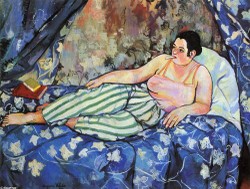
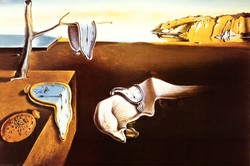
Comments
In 1985, Chamberlain portrayed the title role of Raoul Wallenberg, the Swedish diplomat who helped save one hundred thousand Jews during World War II. This four-hour production was filmed entirely on location in Yugoslavia.
https://www.imdb.com/title/tt0090285/
This is interesting
http://www.richard-chamberlain.com/ar...
Not what I would have expected!
It looks like the library system here has one copy of The last wave.
Richard Chamberlain also played the leading role in Shogun and in The thorn birds, the latter of which English Wikipedia states as set from the "best-selling book in Australian history."
The latter was filmed in the United States, where Australian outback and Queensland scenes respectively were filmed in southern California and on Kaua'i County and island, Hawai'i state!
Would you happen to have seen The thorn birds and would you happen to know of Chamberlain's artistic -- second to his "day job" career as actor and singer -- career in "figure drawing, photography, sculptural construction/assemblage, and acrylic" (Next Gallery site)?
https://www.sbs.com.au/ondemand/watch.... Watching Now
Might be good for the kids at school?
I will go and look now and see if I can find it. Thanks for the suggestion. Jo
Generally, I await the library-system copies.
So no, I don't know anything about The drover's wife. English Wikipedia mentions some context concerning the Snowy Mountains.
Might The drover's wife be related to The man from Snowy River?
The last wave concerns the belief among native Australians in their ancestors as coming from the land of the rising sun, whose architecture in the film determines Bolivia (anciently not landlocked as it is today) or Peru as that origin-country.
That belief fits in with the mysterious drawings in Nazca, Peru; with the mysterious statues on Easter Island well off the Chilean coast; and with the prescient research of Thor Heyerdahl, particularly in Tucume, Peru.
It also might fit in with the Inca civilization predominantly of ancient Ecuador and Peru. The Inca spoke among themselves an unknown language even as they spoke with everyone else one of their conquered people's languages, Runa Shima ("language of the people" and pronounced JROO-nah SHEE-mee), which the Spanish invaders knowingly spread wrongly as Quechua, the verb for "to steal."
Will you have time in your busy art-ing and write-ing schedules to see The Last Wave?
The last wave seems awesome. I will watch that one too. Have you seen The Drover's Wife on Netflix?
The Spanish conquerors had an initially easy time contacting the Aztec civilization because of the latter's ancient prophecy of the return of their god Quetzalcoatl.
There's no such account of such a belief or prophecy or tradition regarding native Australians and European arrivals, correct?
Might you have seen the film The last wave directed by Peter Weir?
So European discoverers and settlers found no native peoples prior to being exposed to a prophecy of a wave of god-like peoples, such as the Aztecs had regarding Spanish conquerors, correct? This is unfamiliar to me. I am under the impression that the people couldn't even work out what they were seeing when the ships with the white ghosts arrived. But I can research that aspect.